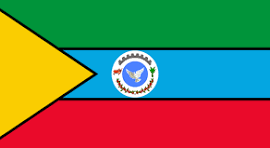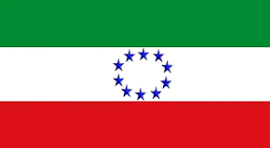Table of Contents
THIS VERSION IS A DRAFT AND HAS NOT BEEN OFFICIALLY APPROVED
AS 6 : Accounting procedure and financial reporting
Objective
- Ensure a good accounting system that guarantees perfect traceability of expenditure and payments.
- Define the financial reporting obligations and timeframes for the PROCEED program, as well as the relevant monitoring indicators.
Responsibilities
- The RTF financial experts of each Bureau must ensure that the accounting records are performed in accurate and timely manner and that the financial reports are prepared in accordance with the required formats and in a timely manner.
- The Administrative Assistance ensures that the individuals involved in the fund flow process have the required capabilities to undertake the tasks, and complete them on a timely basis.
Inputs from other processes
- Approved budget (see process Annex AS4)
- Accounting documentation (see process Annex AS5 and Annex AS5 – A1)
Accounting system, exchange rate and records
The accounting system is developed on Peachtree1) in each region.
The accounting chart is defined based on the segmentation proposed in Annexe Annex AS4 – A1 allowing to identify the three components of the budget defined in the Financial Agreement and the main category of expenses.
The records of the expenses and transactions on Peachtree shall be done as soon as possible after the payment or the transaction (in less than 7 days).
All expenses are recorded in ETB in Peachtree.
Supporting documentation on exchange rates must be provided by the region BoF on request of the AFD Agency; and Exchange rates must be easily accessible and available to the AFD Agency for verification upon request.
The administrative assistance is responsible for:
- defining the exchange procedure (that is detailed in Annex AS6 – A1),
- computing the exchange rate and producing the euro report from the financial report in ETB made by the BoF
Financial reporting
Reporting responsibilities
| FINANCIAL REPORTING | |||||
|---|---|---|---|---|---|
| Key tasks | Prepared by | Validated by | Inputs | Output (document) | Timing / deadline |
| Region sector financial report | Region sector bureau – financial expert | Region sector bureau – Regional task force Coordinator | Accountancy records for the period | Region sector financial report | Monthly dashboard Quarterly, Annually, Advance settlement |
| Region consolidated financial report | Region BoF – financial expert | Region BoF – Budget Sector Head | Region sector financial report | Region consolidated financial report | At least annually for advance instalment |
Types of report
- Monthly financial indicators. The following indicators are updated every month, with the indicator being compiled from the start of the program in ETB and EUR:
- Amount of the received drawdowns,
- Committed expenditure: means expenditure decided by a contract or purchase order, but not necessarily paid,
- Advances paid: means advances paid but not yet eligible if the work has not been completed or the service has not been rendered.
- Eligible expenditure. Means expenses with all the supporting documents to prove the eligibility for the PROCEED programme (e.g. works after the reception of the works),
- Identified gaps, such as lack of documents, difficulties with bank reconciliation and bank statements, in order to inform the persons concerned and to undertake corrective actions.
- Quarterly report – to be prepared on a quarterly basis, within 45 calendar days of the end of the period.
- Annual report – to be prepared based on the Ethiopian fiscal year, within 45 calendar days of the end of the year – i.e. 15 August.
- Donor report for each advance settlement:
- According to the Grant Financing Agreement, the request for an advance is conditional upon having proven the use of 70% of the previous advance (and 100% of the penultimate advance).
- The provisional schedule for advances throughout the PROCEED program is linked to the Ethiopian fiscal calendar. However, if the rhythm of spending differs significantly from the provisional forecasts, there may be requirements to prepare additional financial reports covering periods which are different to the Ethiopian fiscal year.
Content of reports
The following components is included in the quarterly, annual or donor report:
- Balance sheet. The balance sheet shows the consolidated position (cash, current assets and current liabilities) at the start and end of the period, which includes the detail by bank account/third-party account held.
- Statement of use of funds. The statement of use of funds shows actual expenditure which is classified by budget category (respecting mapping of chart of accounts) and includes an actual vs. budget comparison, percentage of utilisation and explanation of variances.
- Bank reconciliation and bank statements. If there are pending payments/receipts, a bank reconciliation must be completed to present the reconciling items between the bank statement balances and the reported balances per the balance sheet.
- Detailed list of expenses. A complete list of all expenses incurred during the relevant period must be prepared, including the information set out in the Annexe.
These financial reports are used as part of the audit process to verify compliance with the AFD rules and the consistency of the reports with the supporting documents justifying the expenditure.
The templates of the reports are detailed in the Annexes Annex AS6 – A2
Presentation of financial results
The monthly financial indicators are prepared by the RTF financial expert, with the support of the Administrative Assistance, and presented in RTF monthly meetings.
The financial annual report is presented to regional and technical steering committees. The RTF financial expert is responsible for taking minutes related to financial matters during this Steering Committee, and taking actions as directed by the steering committees.
In the event of over-expenditure, the Annual Work Plan and Budget for the following year may need to be revised, which requires a non-objection opinion from the AFD (see Annex AS4).
Note: Technical processes for Water Supply and Soil & Water Conservation are binding mechanisms for all Regional, Zonal, Woreda and Kebele actors, whose implementation is supported and monitored by the Technical Assistance. Details of the procedures are presented in Annexes and integrated into Implementing Documents. They are reinforced by social and & environmental safeguards and sustainability principles as described in the Annex GOV3 – A1 Safeguards and Sustainability Compliance.

